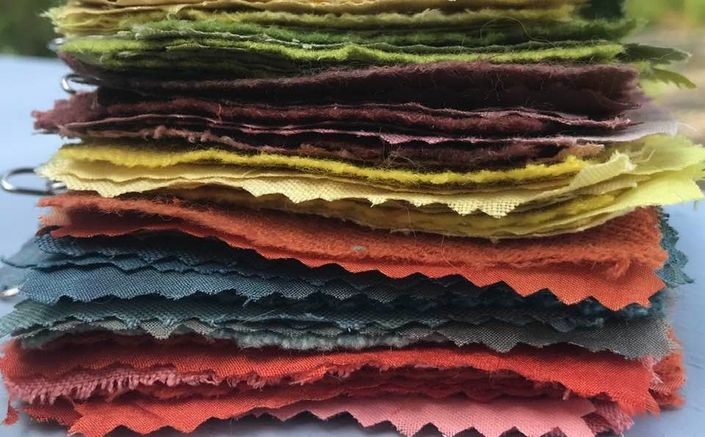
Guilded, Module 2: Colour 2025 (access to course materials expires Dec 31, 2026)
mastering natural dyes

Module 2: Colour
There is no colour than can not be created from Nature’s gifts. Beautiful, lasting natural dye results require understanding the properties of different dye compounds, and how they behave on different fibres and under different conditions. Any given dye result is always the result of multiple variables within the control of the knowledgeable practitioner. Great results require skill, skill comes from knowledge and practice, and knowledge and practice take effort and time.
If you are looking to engage in more structured, comprehensive learning on natural dye sources and recipes, this Module is for you.
Under expert guidance, you will follow historic and contemporary recipes to create a beautiful range of hues, learn to control the many variables of the natural dye process, and gain confidence to be both a knowledgeable custodian of ancient natural dye wisdom, and an explorer of the beautiful colour potential of your own garden and neighbourhood!
All students will have access to the list of required equipment and supplies upon registration.

Lessons cover the following.
In addition to what is noted below, each relevant lesson will introduce and explain simple science, natural dye terminology and definitions, the different fibre types, and an easy home-based experiment for testing colourants in plant materials.
- natural dye sources and dye categories
- dye fastness vs. fugitive colourants, and how to test for fastness (durability of dye results)
- the role of a range of variables in vastly expanding dye colour results
- recreating a number of important historic dyes from around the world
- how to make dye baths, dye vats, solar dyes, compost dyes, fermentation dyes, and over-dyeing
- safe and responsible wildcrafting of local dyes
- how to store, revive, replenish, and safely dispose of dye baths/vats
- proper care of naturally dyed fibres, and proper record keeping

Your Instructor

I am a fibre artist and teacher, focused on ecologically sustainable materials and methods, with several decades of natural dye research and practice, and over a decade of teaching experience. I teach through my own studio on beautiful Cape Breton Island, as a visiting artist elsewhere, as well as online.
My educational background is in science (biology, and public health administration), and I spent over 20 years managing public science policy for governments and non-governmental organizations in Canada and overseas. My natural dye practice is, therefore, grounded in both the art and the science of methods and materials, and I strive to make basic natural dye science accessible and fun for students, in order to boost confidence and the ability to experiment on one's own.
I am committed to methods and materials that are safe and have the lightest ecological footprint, but teach students the global history of a broad range of techniques, out of respect for the ancient lineage and heritage skills of which we become the custodians when we take up this wonderful, colourful craft.
I am a weaver, paper and book maker, but most of all, a natural dye researcher, practitioner, advocate, and educator. I'm a juried member of the Cape Breton Centre for Craft & Design, and a member of the Canadian Weavers' Guild. I am the founder of the Cape Breton Fibre Trail, and admin of the Natural Dye Education Facebook Group.
Course Curriculum
-
StartWelcome & Copyright (please read me)
-
StartManaging Your Account
-
StartPlease Ensure Your Account Is Under Your Name
-
StartCourse Launch - April 1, 12 noon Atlantic Time
-
StartFibres List
-
StartSupplies List
-
StartEquipment List / Studio Set Up
-
StartList of Global Suppliers (undyed fibres, mordants, dyes)
-
StartPreparatory Exercise #1: Scouring & Mordanting
-
StartPreparatory Exercise #2: Choose Your Pantone Colour
-
StartPosting Comments in the Course
-
StartInstructor Greeting & Course Orientation Video (5:31)
-
StartNo Course Extension
-
StartYour Safety
-
StartNatural Dye Terminology
-
StartNatural Dye Basic Science
-
StartHow To Calculate WOF
-
StartRecord Keeping & Defining A "Fibre Set" (6:02)
-
StartRecord Keeping Template
-
StartSample Trackers
-
StartGeneral Dye Bath Principles
-
StartHow To Test If Your Water Is Soft Or Hard
-
StartQuiz!
